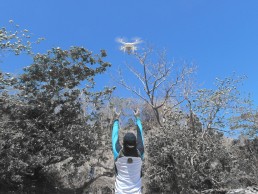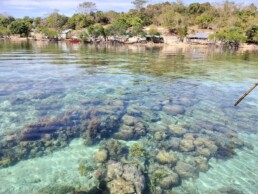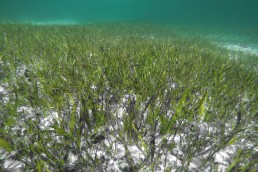Endangered Marine Species
Dugong Conservation
The country’s first Dugong and Sea Turtle Protected Area.
The iconic yet elusive dugong can be observed regularly around certain bays of Palawan. Unfortunately, it is still very much under threat, having been exterminated from many areas of the archipelago by deliberate hunting, accidental bycatch, and destruction of its feeding grounds and seagrass beds.
Like dugongs, green sea turtles and Hawksbill sea turtles are charismatic and highly threatened species in these zones. They have been highly exploited in the past, with poaching of adults and eggs across the islands.
Palawan is already known for several notable MPAs: the Northeastern Palawan Marine Protected Area Network, which includes, among others, the pristine waters of El Nido, Roxas, and Taytay; the popular snorkeling destination of Siete Pecados in Coron; and Cagayancillo, home to the Tubbataha Reefs Natural Park, the largest MPA in the country. It is in Palawan that C3’s achievement is situated: the country’s first Dugong and Sea Turtle Protected Area.
This sustainable, community-run dugong conservation programme in the Calamianes islands promotes protection measures that focus on long-term seagrass and nesting beach monitoring. C3’s recent expansion to Northern Palawan and the launch of its Taytay office extends the area of monitoring and protection of these species.
To monitor small and threatened dugong populations, C3 Philippines pioneers the use of drone technology along with Murdoch University and National Geographic. The surveys also include sea turtle and marine mammal counts. Data generated fine-tunes and feeds into the innovative Dugong Detector system, which was awarded a Google Challenge Prize in 2018. The technology’s low cost makes it suitable and accessible for scientific endeavors in developing countries.
C3 also acts as an advisory body to the Indigenous Tagbanwa tribes of Calawit island.
In 2017, an informal dugong-watching programme sprung up in Calawit, focusing on a particularly bold dugong named Aban. C3 developed dugong-watching guidelines based on protocols used in Australia and Vanuatu, and trained a corps of community members as Bantay Dugong (Dugong Monitors). However, this industry must not have adverse effects on the dugong or its fragile habitat; thus, in 2018, following a five-month research study, a set of recommendations was submitted to the Indigenous council regarding limits on visitor numbers and an equitable sharing of benefits between tour operators and local communities.
C3 is also conducting a study on indigenous traditional knowledge surrounding sea turtles and implications for their conservation, again funded by National Geographic.

Related Case Studies
Contact C3 Philippines
Busuanga OfficeSalvacion, Busuanga, Palawan, 5317 Philippines
Taytay Field OfficePurok 6 San Lorenzo, PoblacionTaytay, Palawan, 5312 Philippines
C3 Philippines (C3PHILIPPINES INC.), in accordance with the Corporation Code of the Philippines, is registered as a non-profit organization in the Philippines under the Securities and Exchange Commission with Company Registration No. CN201115227.



